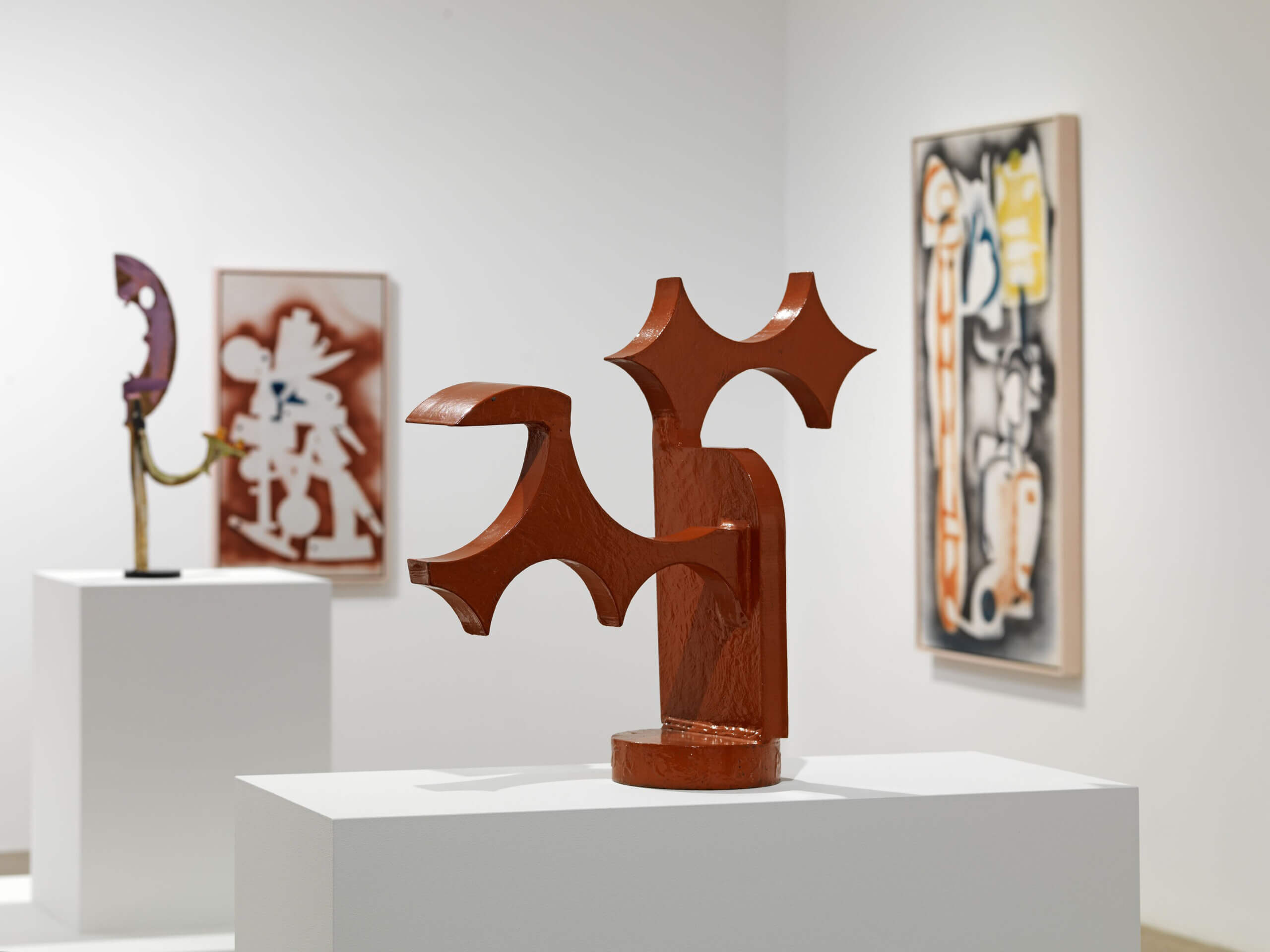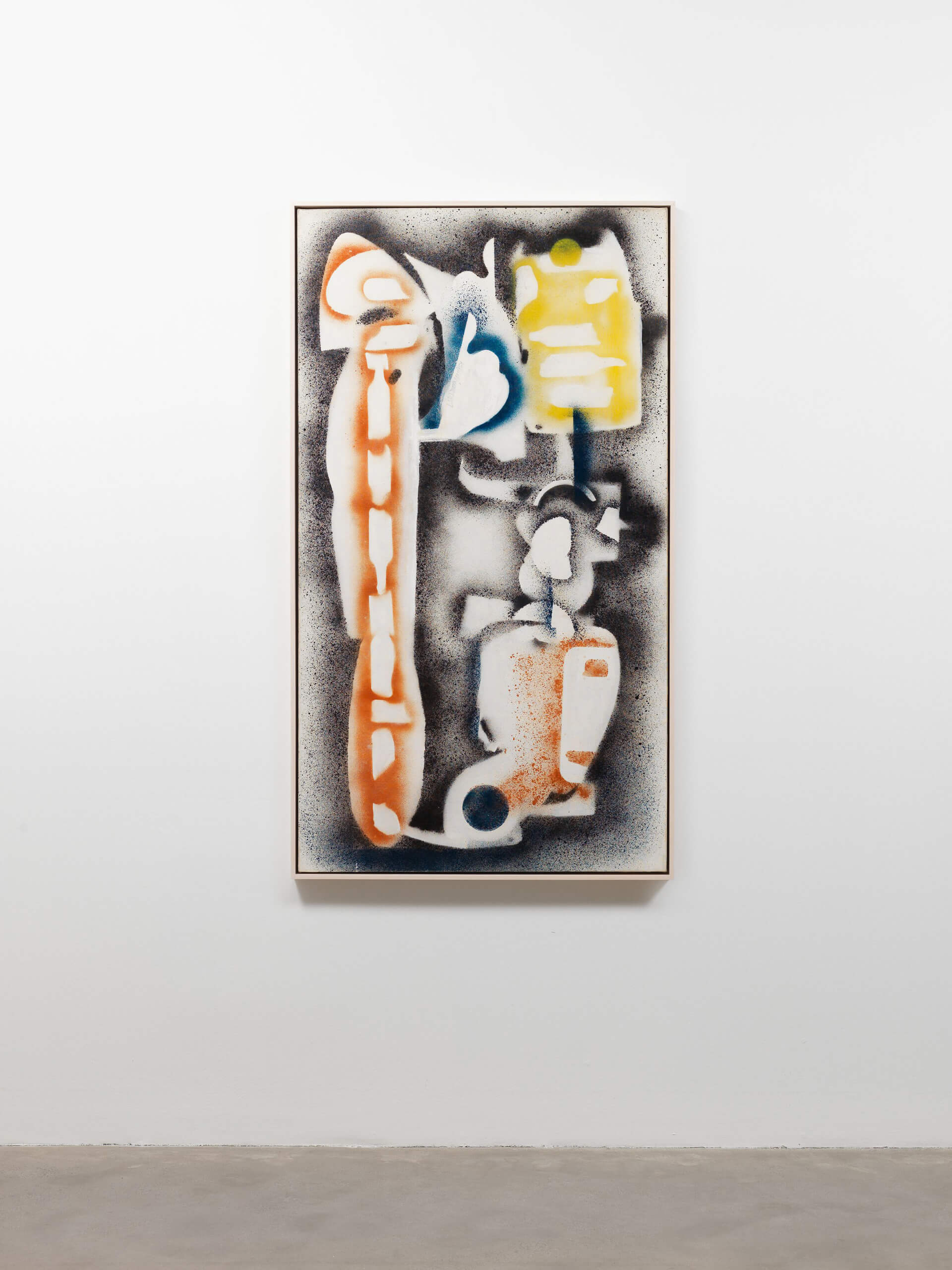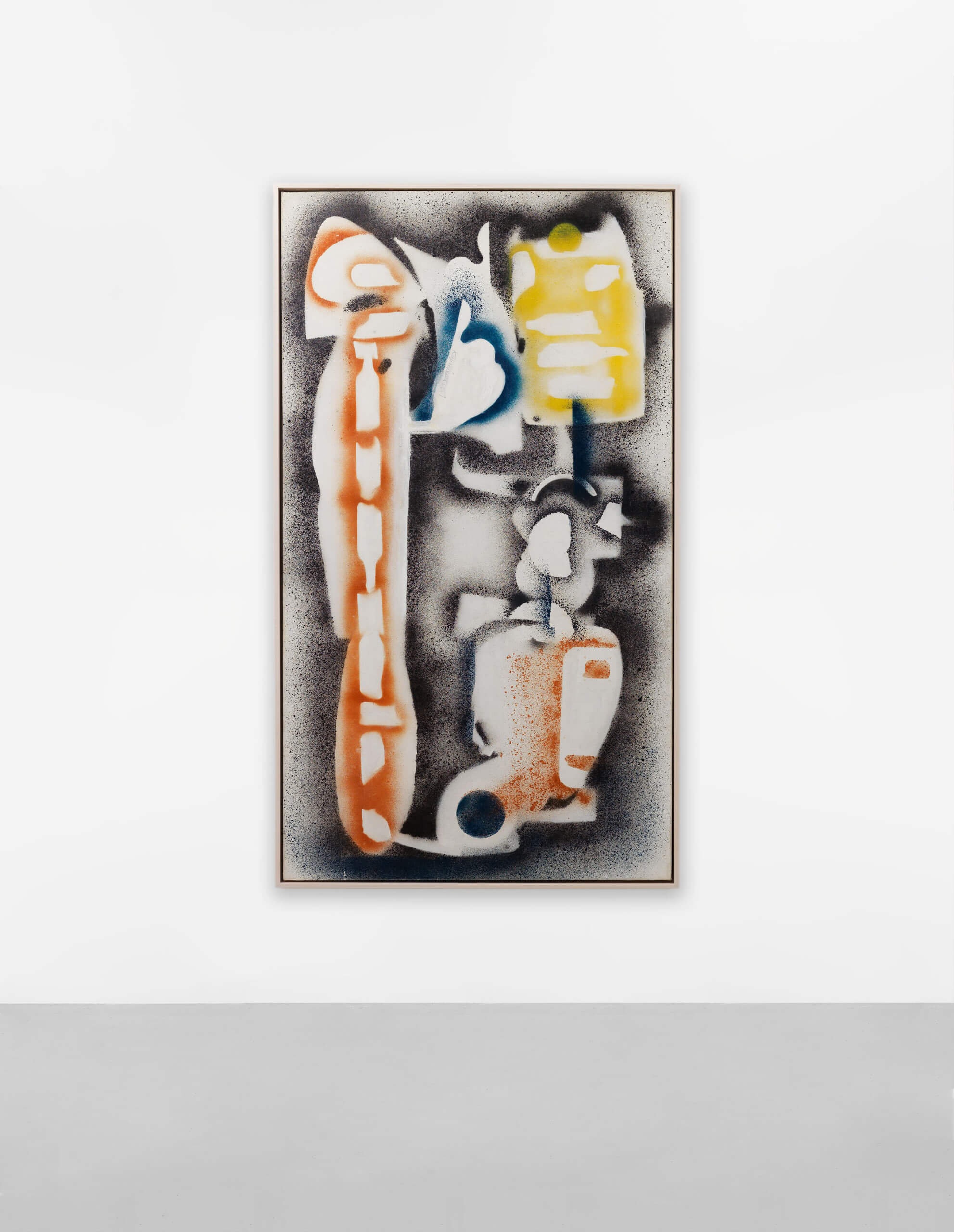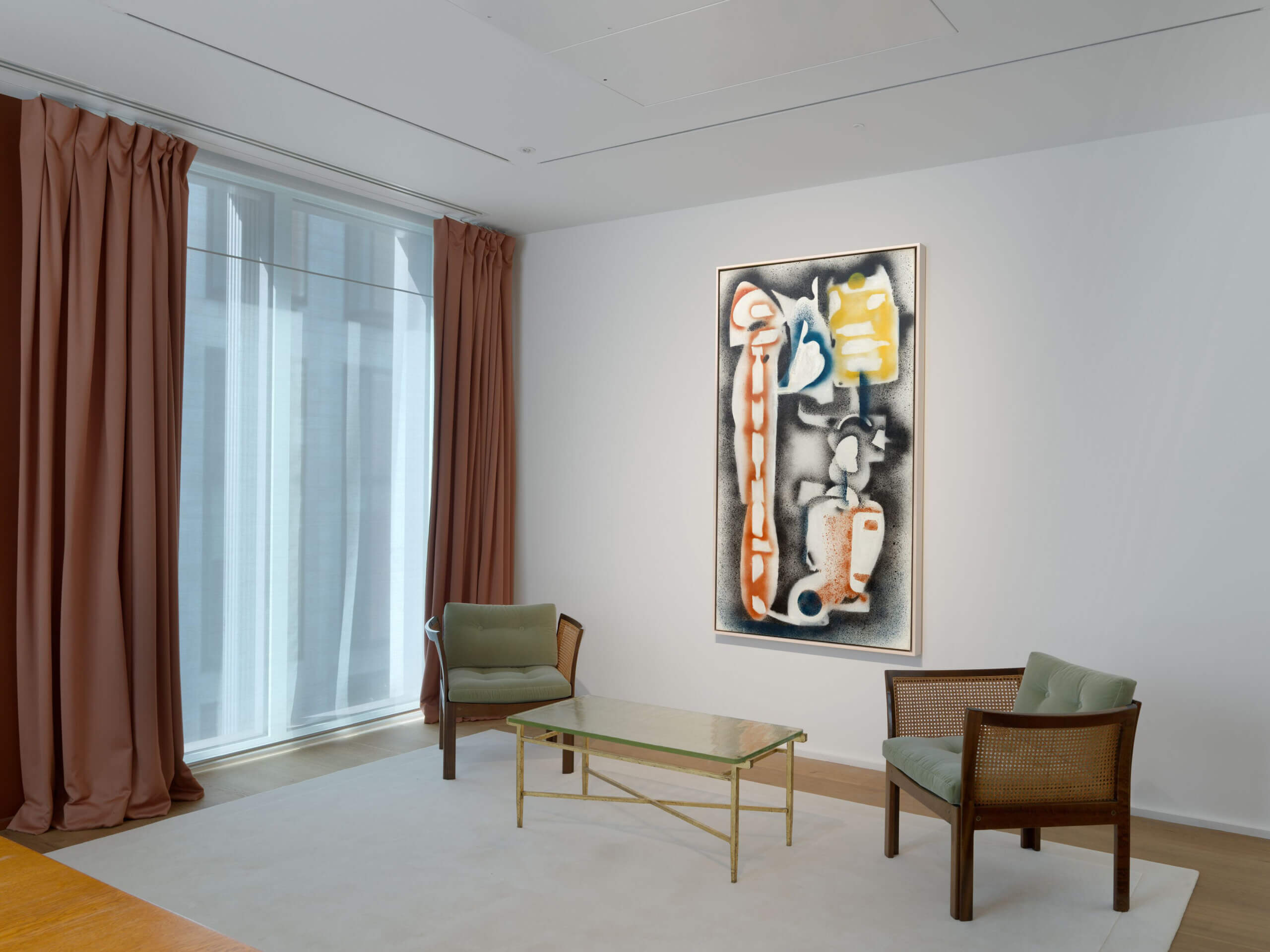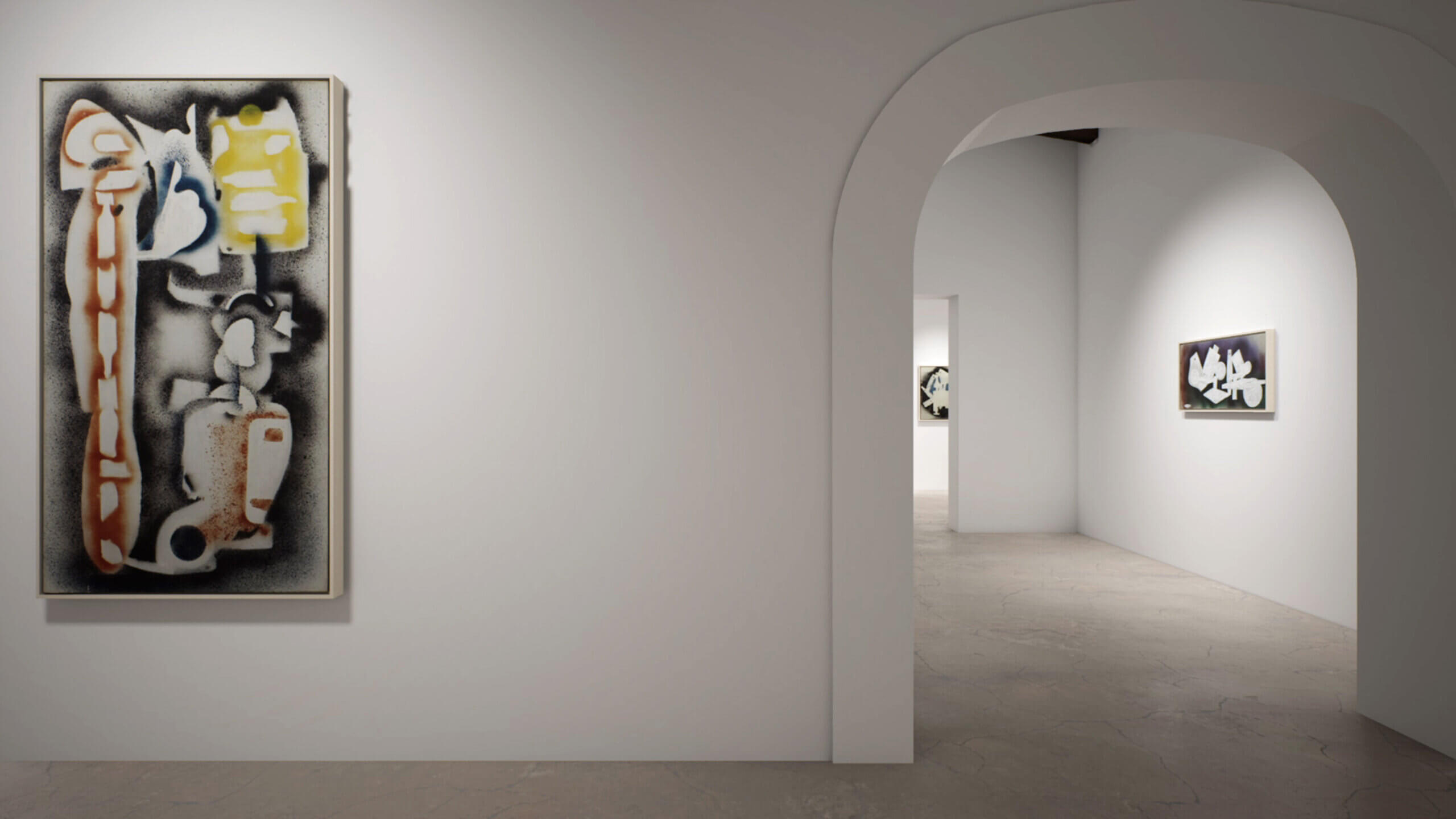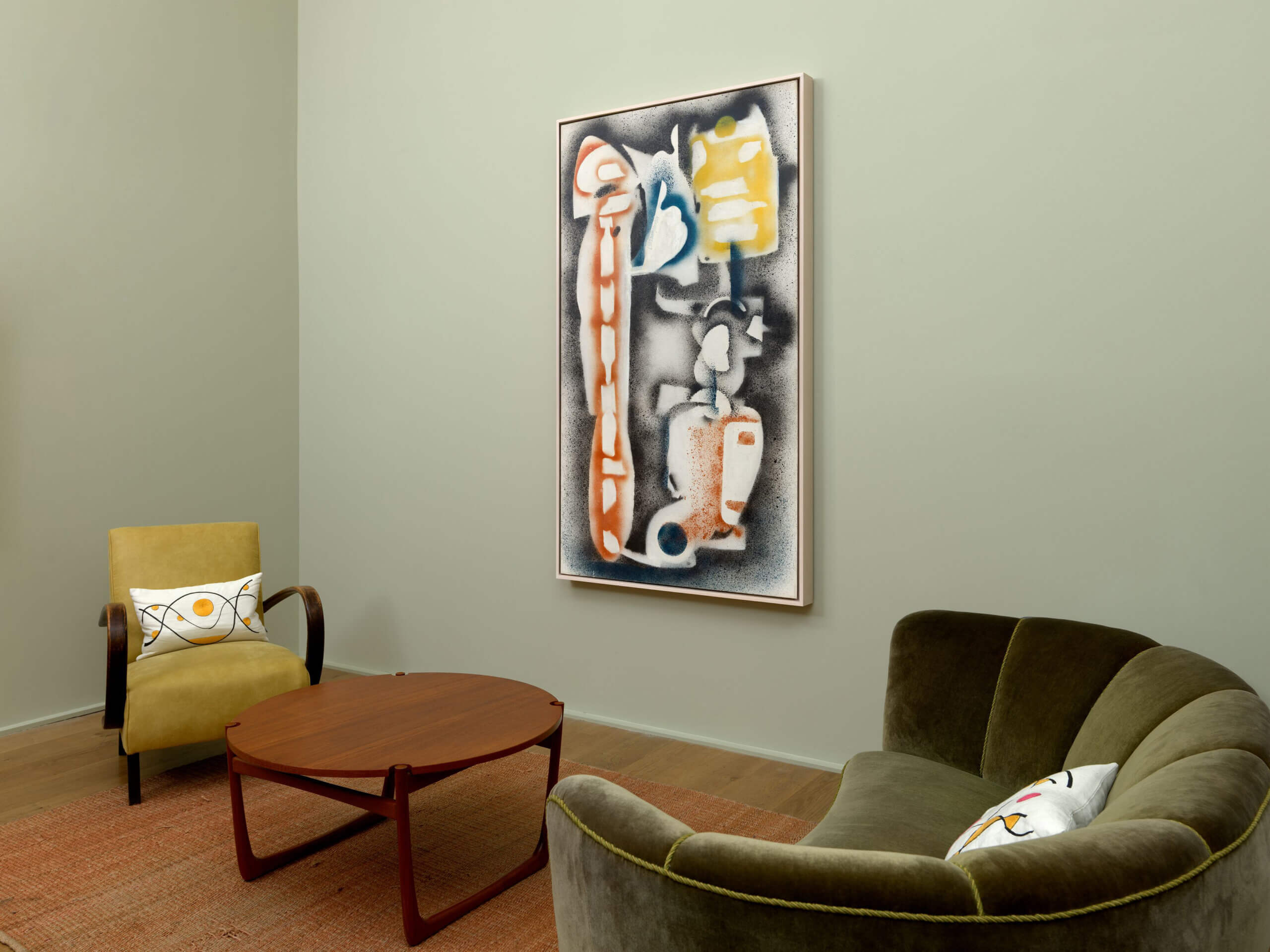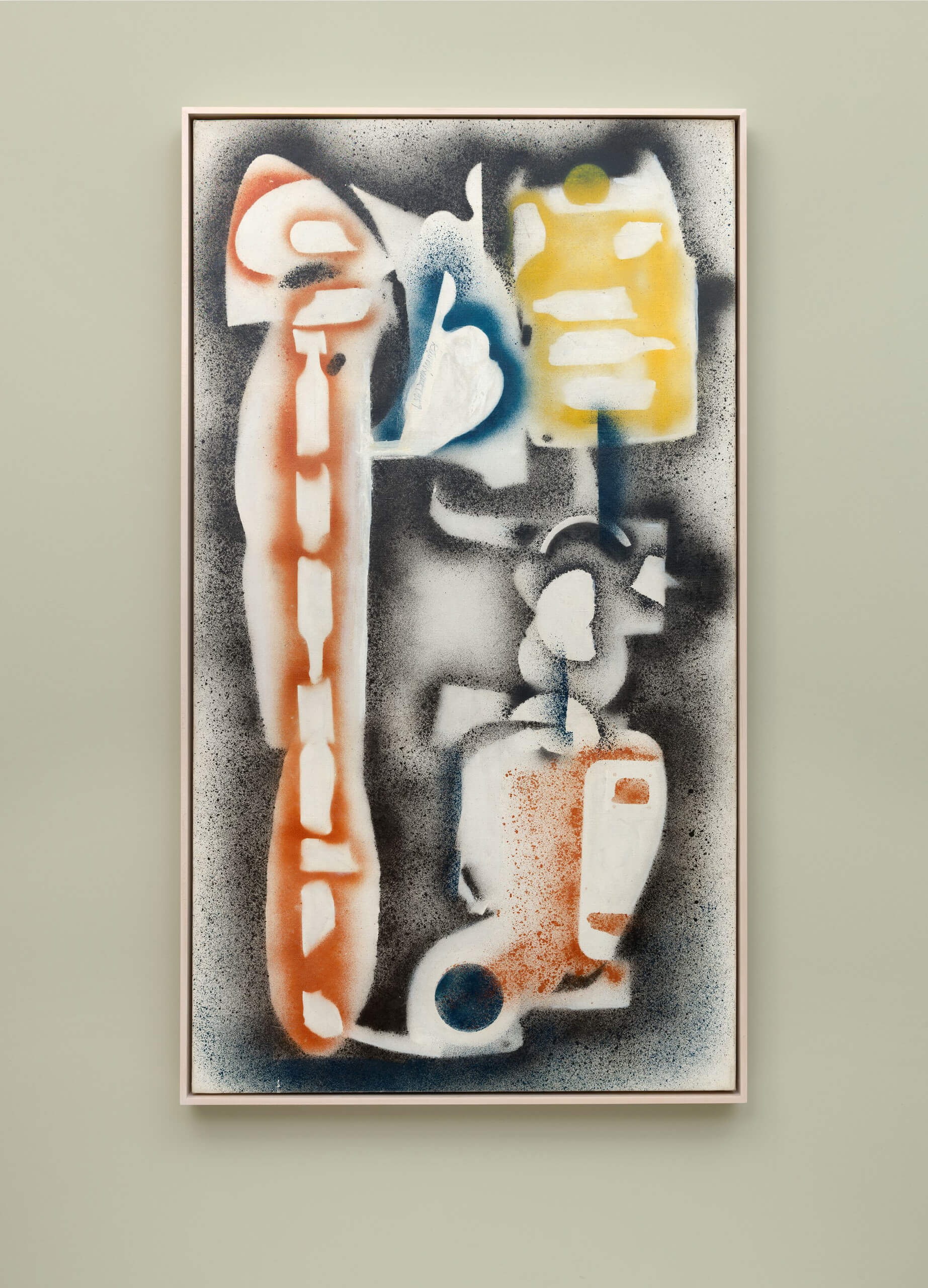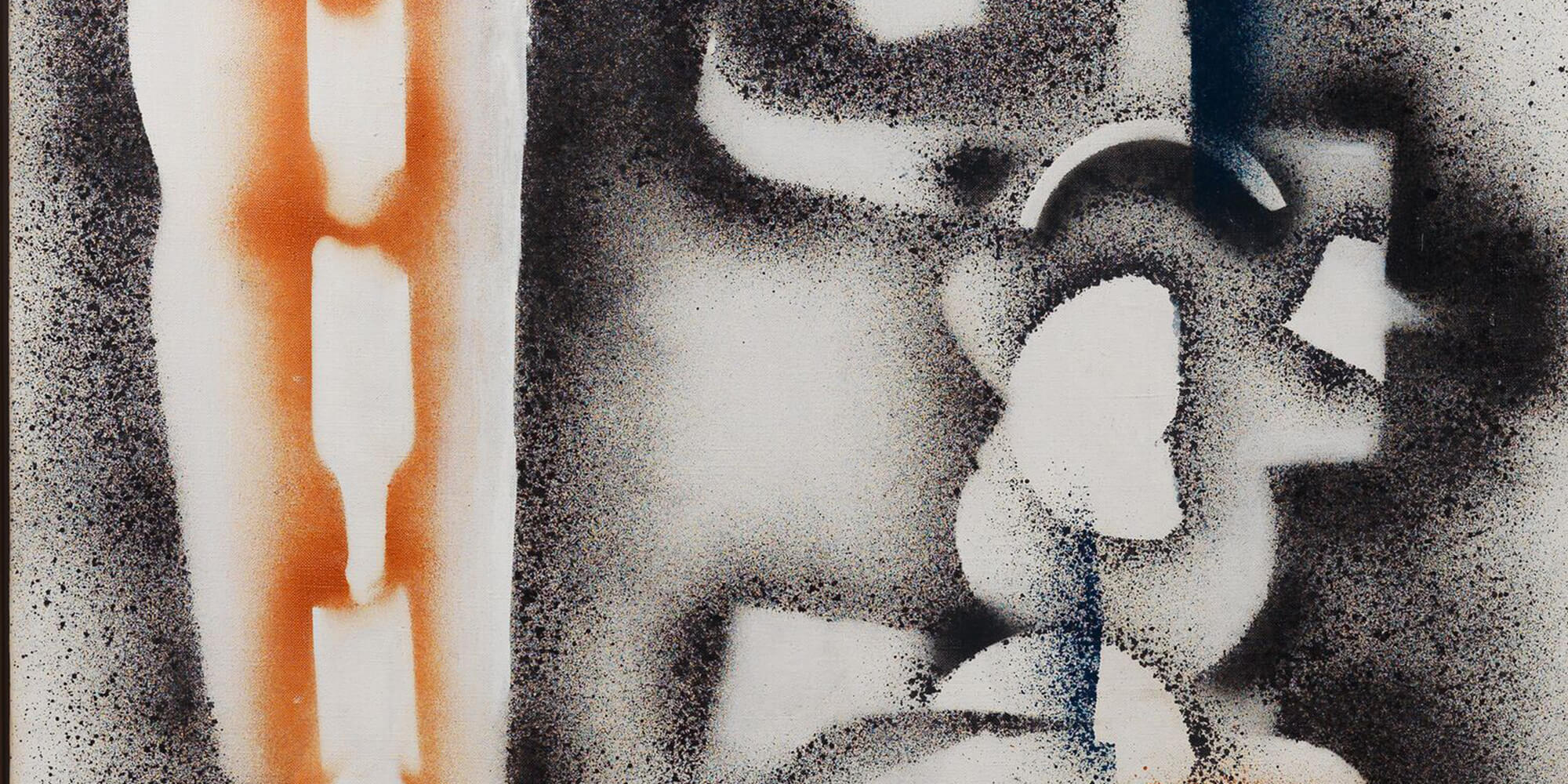
David Smith
Untitled
Untitled
1959 Spray enamel on canvas 180.3 x 99.1 cm / 71 x 39 in 184.2 x 104.5 x 7.6 cm / 72 1/2 x 41 1/8 x 3 in (framed)
In 1957, almost immediately after the invention of the aerosol spray can, Smith began his ‘Sprays’, which would occupy him into the early 1960s. With the Sprays, Smith adopted a medium that was perfectly aligned with his sculptural process. The use of industrial methods and materials had long been employed by Smith to expand his work beyond refinement. Developed from Smith’s sculptural practice; elements of his work were placed on a white painted floor before welding. The welding often scorched the white area leaving a negative image of the sculpture.
'Sculpture is to a degree more premeditated than painting due to...physical laws...which do not permit the flow of realisation as easily as most painting materials... even when the mass bulk is indicated by line or relatively two-dimensional form...the time demanded by material restraint to make unity, the suspension...all demand more premeditation and conviction...than when the same form is indicated by paint or line on the plane surface.'—David Smith
The Sprays encapsulate the overlap between two- and three-dimensional activities in Smith’s practice. As in the artist’s sculptures, the Sprays present an interplay of simple, bold form, the complex rhythms of shapes produced challenging our perceptions of space and time. Composed of biomorphic forms in seemingly fluid configurations, the Sprays examine the ambiguity between positive and negative space, contrasting layers of effervescent color with a vacuum of pure white. Exercising a spontaneity absent from sculpture, the Sprays represent a direct and unmediated form of expression that, for Smith, provided more than simple studies for his sculptural work.
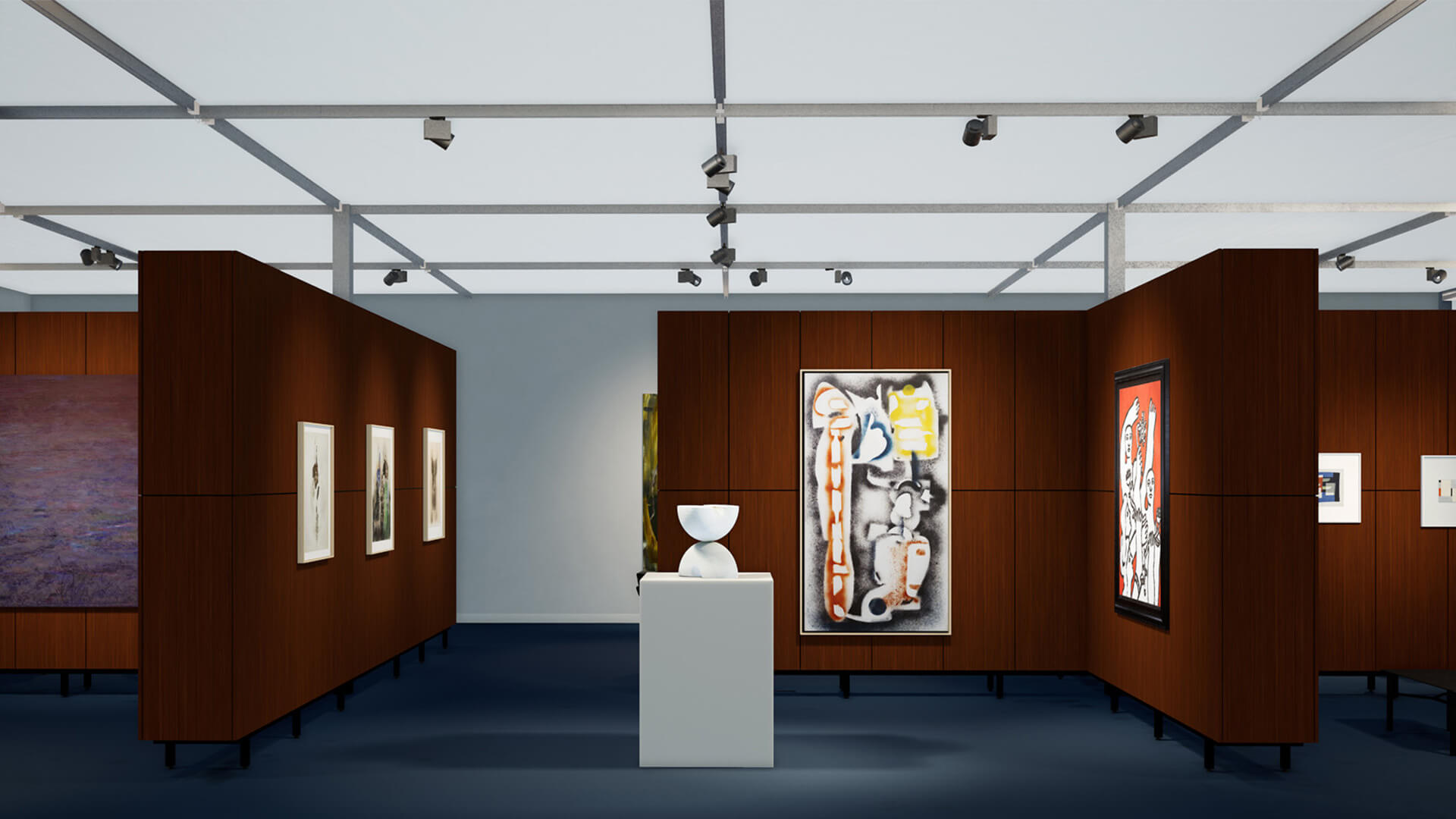
Made simultaneously to some of Smith’s most rigorously geometric sculpture, the Sprays, in comparison, are chaotic, their lingering after-images almost arcane. Yet, while the Sprays seem to suggest a significant departure from the artist’s sculpture, for Smith the two mediums were conceptually continuous. It is this interdependence of sculpture and painting that enriches the viewer’s reception of Smith’s oeuvre, emphasizing the artist’s conviction that every facet of his visual output represents an essential element of his total artistic vision.
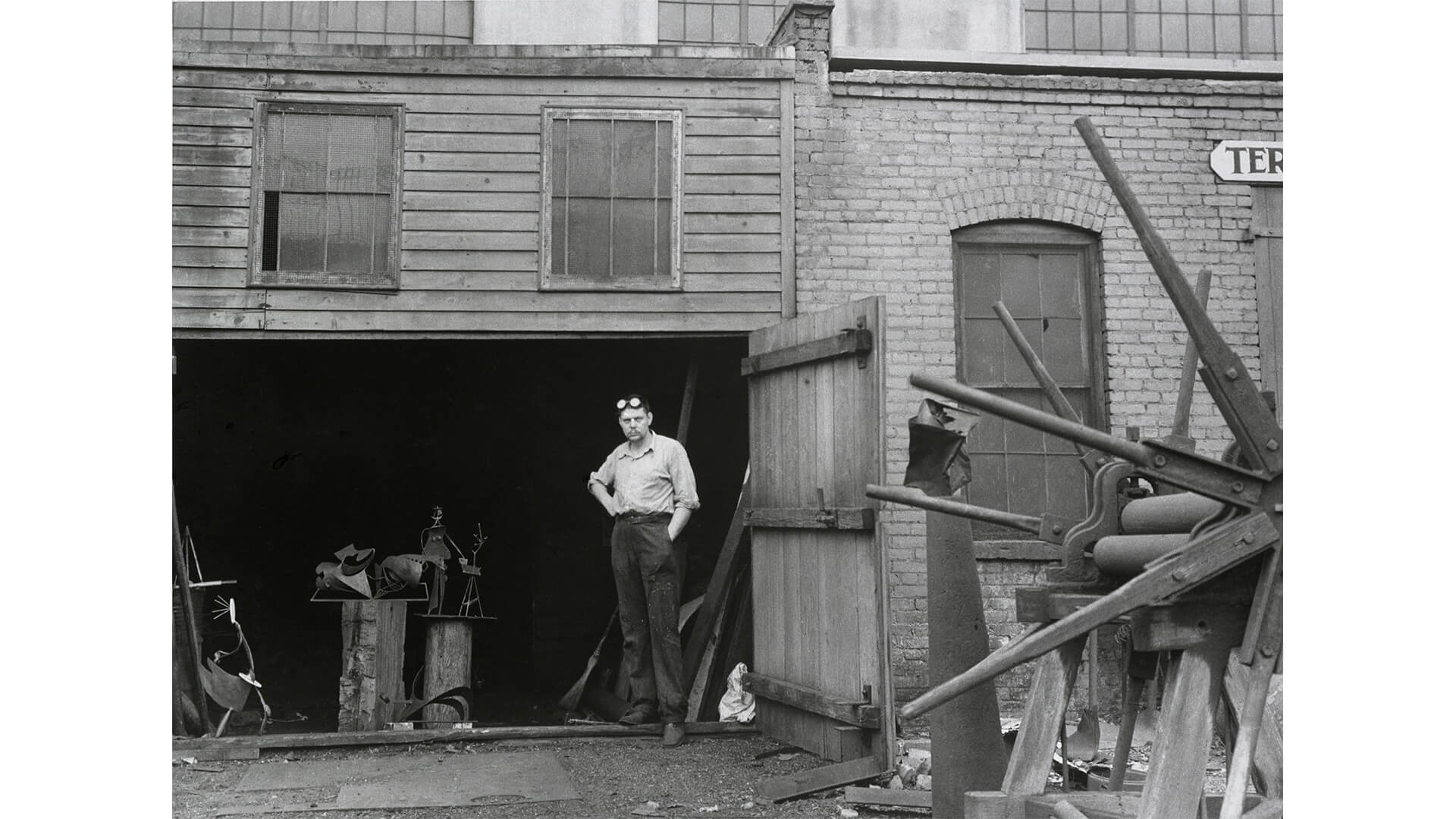
David Smith
One of the foremost artists of the twentieth century and the sculptor most closely linked to the Abstract Expressionist movement, David Smith is known for his use of industrial methods and materials, and the integration of open space into sculpture. Over a 33-year career, Smith greatly expanded the notion of what sculpture could be, questioning its relationship with the space it was created in and its final habitat; from the artist’s atelier and art foundry into the realms of industry and nature. Spanning pure abstraction and poetic figuration, Smith’s deeply humanist vision has inspired generations of sculptors for the decades since his death.
